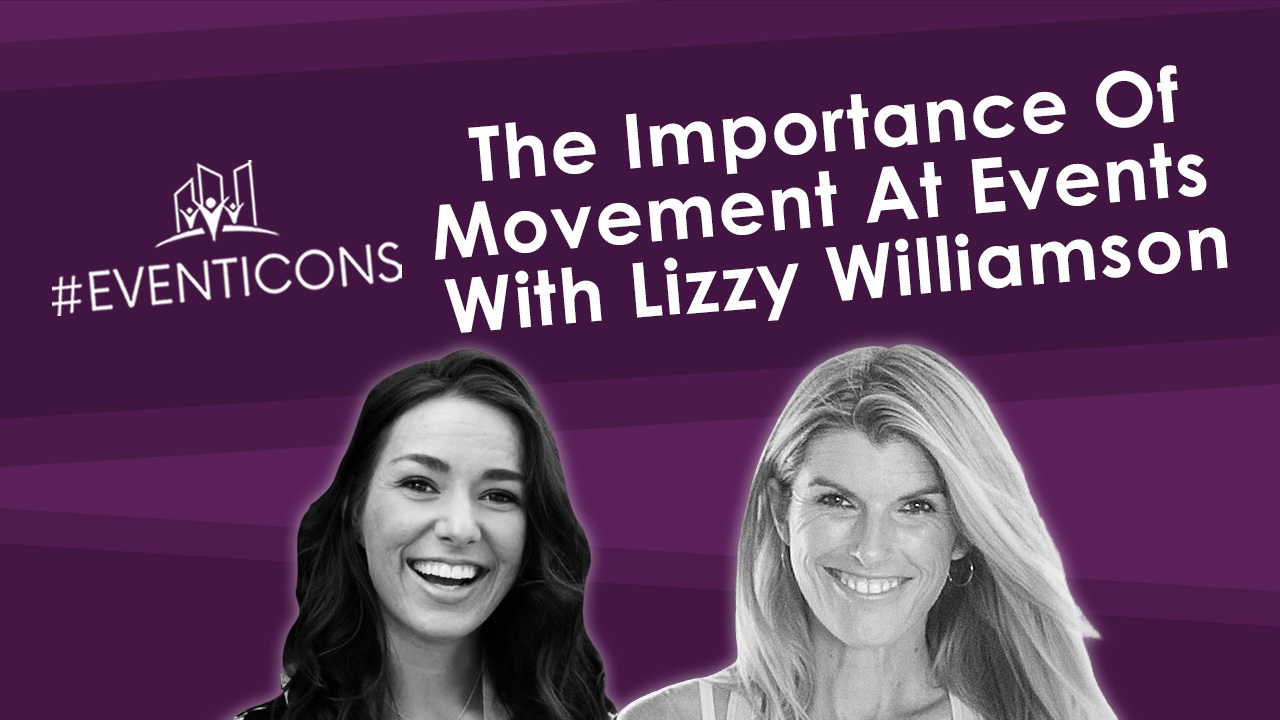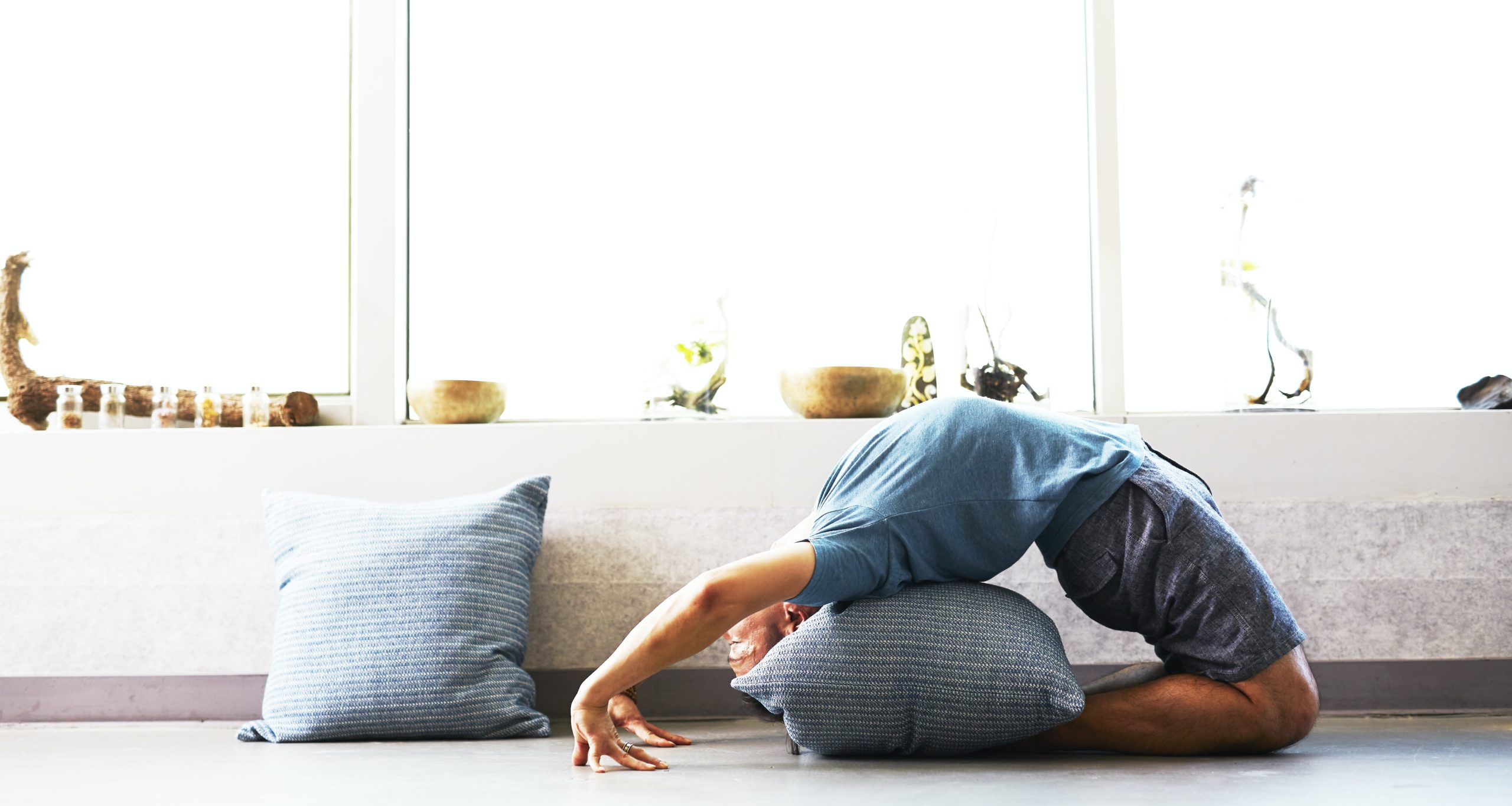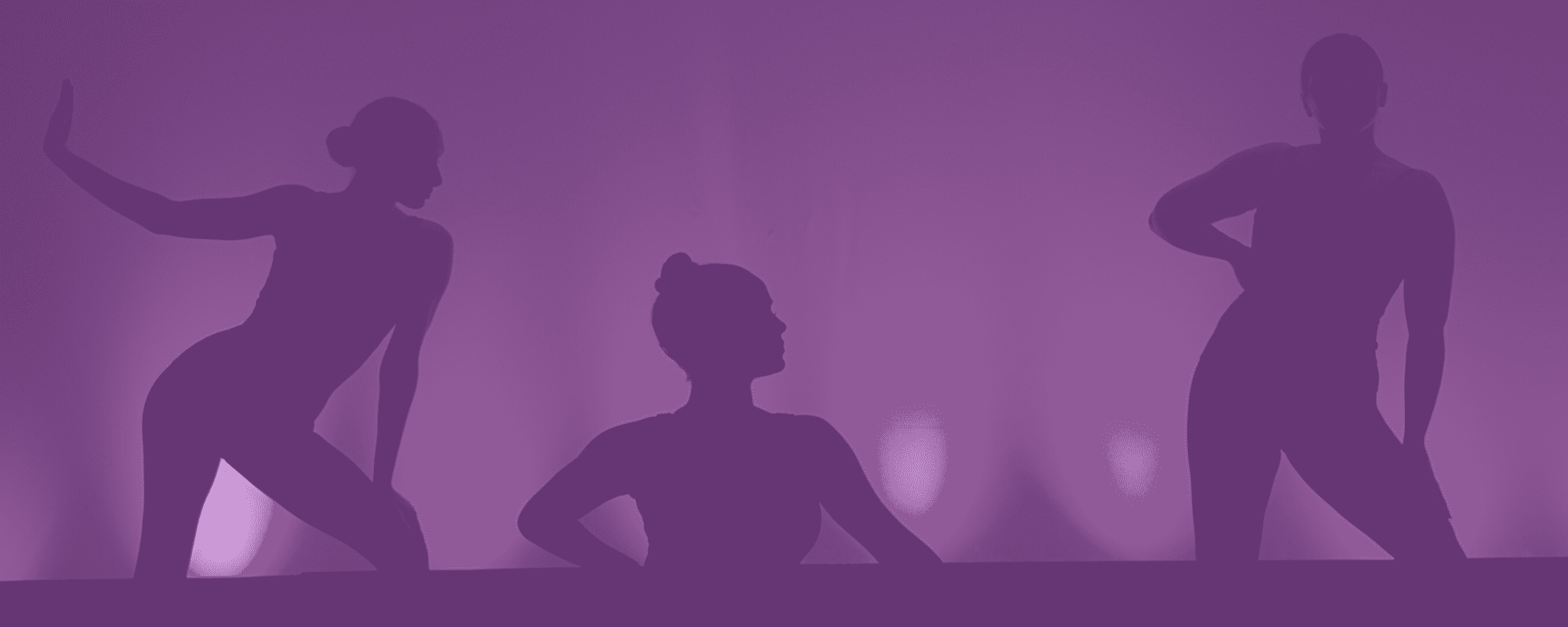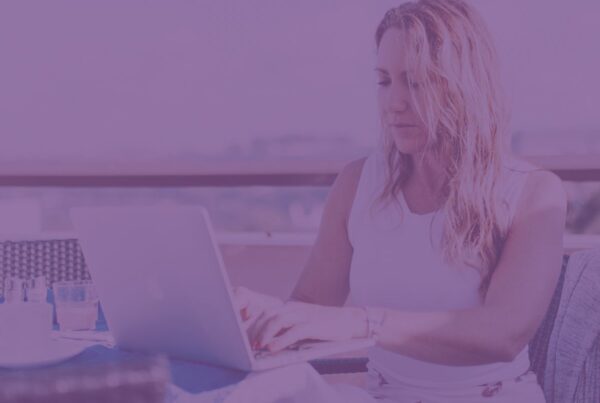When we talk about movement at events, our minds might go to walking around the venue at in-person events or walking to the fridge if we’re attending a virtual experience. But what if we told you that a little movement goes a long way even before or during speaker presentations? Taking care of the health of the attendees is a growing trend in the events industry – and we’re not just talking about COVID-19 compliance at events. PCMA EduCon 2021, for example, hosted a gamified health challenge and encouraged attendees to move their bodies. So, we brought on an iconic guest to explain to us what movement at events is all about.
Our #EventIcons guest is Lizzy Williamson, an event and meeting energizer who coined the term Two Minute Moves. As a wellness and fitness enthusiast, she knows all about the science behind moving our bodies. Not only is it good for our mental and physical health, it also boosts engagement at virtual, hybrid, and in-person events. So press play and join Sarah and Lizzy as they talk and demonstrate how to elevate your event with movement!

There’s A Need For Movement At Events
First, Lizzy explains how she got to where she stands today. She started out her career as a professional dancer. “Then, I moved into personal training. When I was at conferences and events, I’d often notice that people started to twitch and get uncomfortable in their bodies. You can see it. There are times where the energy naturally starts to drop. So I thought to myself: I need to get up on that stage and get everyone up just for a quick stretch and move. It will change the whole vibe in this room. Then, they’d sit back down and be able to get their full focus and attention to the speaker because that’s what movement does to you,” she says.
Lizzy saw a need, met it, and came up with a solution. “I started contacting events that were on and suggesting I do this. At the beginning they thought it was a ridiculous idea, no one’s going to want to do that. But they trusted me. Then, I started to show that actually people love that opportunity to move at events. I was in front of 5,000 people and we were dancing and moving. And then COVID hit and then it all became about the virtual world. And in fact, it was almost even more powerful to be able to do this for virtual events.”
Start Small!
Lizzy mentions two big challenges that stand in the way of people moving their bodies more. “Whether you’re an event organizer or an attendee, it can be easy to think that you don’t have time to get up and move your body. People actually say: ‘My energy is a bit low because I’ve been having screen fatigue anyway’. And the other thing is that they often don’t even know what to do. People often say: ‘You should get up in your workday or an event and move your body’. Well, how are you supposed to move your body?”
Lizzy suggests starting small. After all, it worked wonders for her in the past. “This idea began when I had postpartum depression and exercise became too hard. I just started doing little moments of exercise and movement. That’s all I could kind of get myself to do. That’s when I realized: if I don’t have half an hour, I can still take this moment to move. And surprisingly, it makes a big difference.”
 The Science Behind Movement At Events (& Beyond!)
The Science Behind Movement At Events (& Beyond!)
Lizzy talks about the science supporting her quest to introduce more movement to events. “There’s the body and there’s the brain. And then there’s the spirit, your energy and the way you’re feeling your mood. So we need to take care of people’s bodies. We want to make sure their brains are switched on because when you’re at a great event, you want to really get the information and absorb it. And then of course, we want ourselves and our attendees to feel happy and energetic.”
“Our brain is designed to function at its best when we are moving. This brain of ours is built to detect and respond to change. It’s not built to just be there for hours and hours focusing on one thing. So if you give it this moment to look away from the screen to move, to get some oxygen flowing, you’re able to focus better and for longer periods of time,” she says.
“We’ve got this chemical, BDNF – brain-derived neurotrophic factor. And when we are moving, these little cell passes talk to each other better. We get more cells in our brain, so it’s able to work in a much more effective way.”
Generating Energy Is Not A Roller Coaster, But A Loop!
And then there are our hearts. “Our heart pumps oxygen, which is energy to our body. So when we are moving our body, our heart is able to pump that oxygen more efficiently to our cells and our muscles. And that’s why we get more energy. Often when we want more energy, we go for a cup of coffee or that sugary snack. But then, that up becomes a down and then we think: ‘I need another cup of coffee’,” Lizzy says.
“We go on this roller coaster ride and what we want instead is a loop,” she elaborates. “And that’s what movement is. That’s what the oxygen does. The oxygen flowing to our brain helps us be more creative as well. Studies show that if you have a walk, you boost your creative output by 60% and those creative juices continue to flow. Hence why engagement gets boosted after you have done some kind of movement.”
Lastly, movement boosts serotonin. “Serotonin is our feel-good hormone. And that naturally helps to counteract cortisol, which is our stress hormone. Along with endorphins, that’s why we feel so much better when we’ve actually gotten up.”
Why don’t we feel like moving if it’s so great? “We think we need to conserve our energy so that we can start running away from the saber tooth tiger, but we actually don’t often need to conserve energy any more. You just don’t feel like it. So it’s finding those little ways that make it a whole lot easier to actually do it,” Lizzy explains.
 Movement At Events: Practical Tips
Movement At Events: Practical Tips
Now that we’re all on the same page about the positive affects of movement at events, Lizzy shares some practical tips. “If it’s an hour-long presentation, moving would be a great thing to do right at the beginning or in the middle. When it’s a day-long thing, it’s that mid-morning, post-lunch, and that mid-afternoon. I do a lot of events where people will start the morning off with some movement, maybe some nice breathing techniques to get everyone focused and in the mood for it. Those are the times that our energy naturally starts to dip. But it’s also about finding what works for you.”
“Song choice is number one. When I do an event, I look at the theme. Can I incorporate a song that enhances the theme? I look at who the attendees are. Do they need to be pumped up? Are they all really exhausted and need a boost of morale?”
Conclusive Thoughts
Many event planners might shrug movement at events off. After all, they’ve got so much on their plates as it is! However, Lizzy thinks that a little movement goes a long way in enhancing the entire event experience.
“Wellness and wellbeing of our attendees used to be at the bottom of event planners’ priorities, but that’s changing. It has become such a trend and I think people are expecting it. So what I would suggest is to start with one moment in your event that you can offer something quite special, a little way to enhance the attendees experience. That way, they’ll feel taken care of. Movement at events is such a powerful way to help people’s mental health, physical health, and also a great tool to give to them. Maybe they’ll incorporate little moments of movements into their workdays,” concludes Lizzy.
Hopefully, this conversation inspired you to get up, take a walk, or at least stretch a little bit. Keep moving and stay tuned for another awesome episode of #EventIcons!










